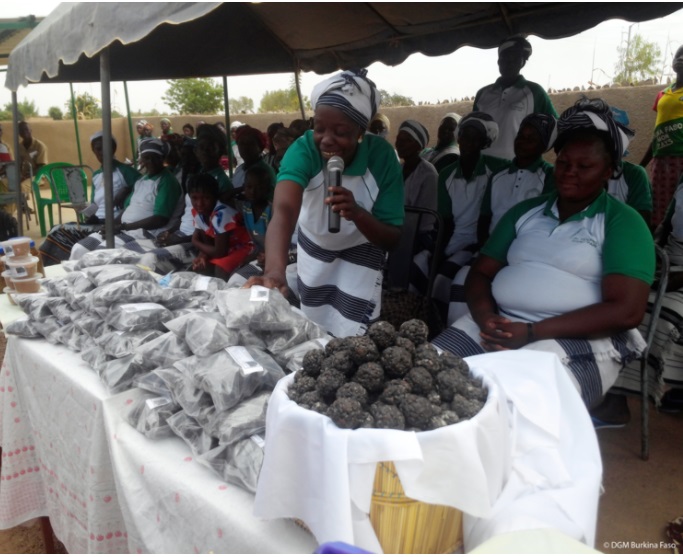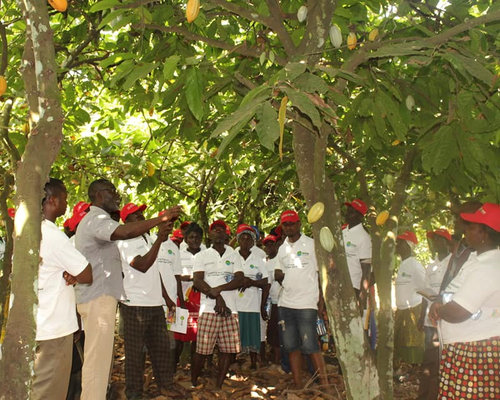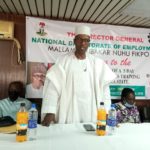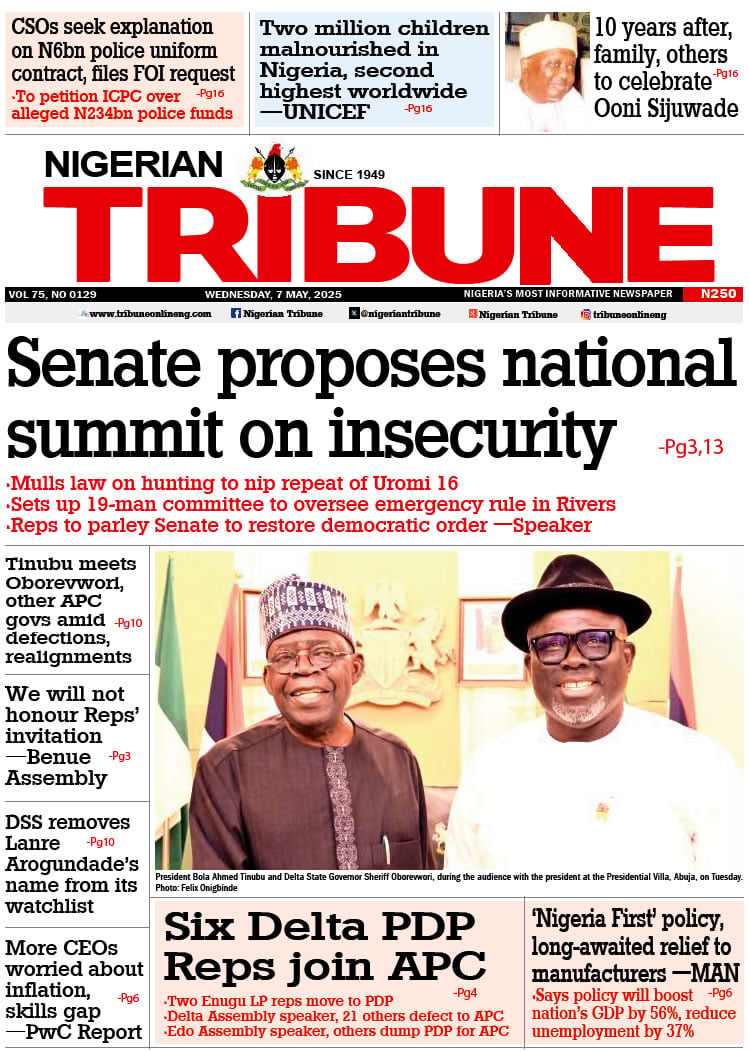Amid growing concerns for climate change in Africa, experts are canvassing people-oriented initiatives for effective forest management in the region. IFEDAYO OGUNYEMI reports;
Following widespread challenges facing dryland and forest management in Africa including degradation of farmlands, experts have continued to canvas community-centred actions as a solution to the restoration of drylands in Africa among others.
Experts who spoke at the world’s first digital conference focused solely on African drylands, Global Landscapes Forum (GLF) Africa with the theme: “Restoring Africa’s Drylands” argued that activities and actions created by the people in the affected communities will save the planet and the people around it.
The conference which was held on June 2 and 3, 2021 sought ways on how the most culturally and ecologically important landscapes of Africa can be saved from fragility and loss comes ahead of the kick-off of the UN Decade on Ecosystem Restoration, expected to run from 2021 to 2030.
Part of the solutions put forward to solving land degradation in Africa is the implementation of the Dedicated Grant Mechanism for Indigenous Peoples and Local Communities (DGM) which empowers community people to design and implement actions that protect forests and strengthen their capacity to participate in climate action at local, national and global levels.
Tribune Online reports that DGM draws from the expertise of communities to facilitate knowledge sharing, strengthen networks, and elevate community voices and successes to regional and global scales.
Speaking at the conference during the “Dedicated Grant Mechanism (DGM) and Support for Indigenous Peoples and Local Communities (IPLC) Engagement in Landscape Restoration on the Ground” session hosted by the World Bank, the experts further noted that despite efforts to protect the forests, deforestation continues to accelerate and poses a great challenge, stating that there must be concerted efforts by stakeholders to save the continent from the precipice.
The Global Lead for Forest Landscapes and Biodiversity, ENB, at the World Bank, Baro Batmanian, noted that DGM gives the communities and its people control to decide on what they think is important for them because the problems of farming and climate change differ from country to country.
“Ghana’s experience is different from what is happening in the South Americas,” Batmanian said. “DGM offers an avenue to empower communities to decide what to do in order to have a livelihood. And remember that such a decision must be good for both the planet and the people.”
While canvassing for more people-centred solutions, he said: “We are concerned about the management of what they use so all of us can be safer. It is commendable that some African countries have committed to the restoration of about 100 million hectares of land.
“And we are already in the era of the UN’s Decade of Reforestation but we cannot do that without working with the communities.”
Though, established by the Climate Investment Funds (CIF) in 2010 and funded by CIF’s Forest Investment Programme (FIP), DGM mechanism for IPLC was conceived and designed by IPLCs to enhance the role of IPLCs in protecting the forests they depend on. The two broad components of the DGM involve the provision of grants to IPLCs to develop and implement subprojects of their choice, under their control as well as the capacity building for IPLC organizations.
Backed by an $80 million investment, DGM supports community-led, context-specific programmes that draw on local expertise to advance sustainable forest stewardship and elevate IPLC voices in local, national, and global climate action while protecting forest ecosystems, mitigating climate change, and providing sustainable livelihoods.
With the implementation in six African nations – the Democratic Republic of Congo, Mozambique, Côte d’Ivoire, Ghana, Burkina Faso and the Republic of the Congo – DGM has raised hopes for the creation of indigenous solutions that could be used to solve climate problems in the communities, locally and at the national level.
With the use of DGM support, women in Burkina Faso have improved the production and marketing of non-timber products such as Sombala, a popular West African condiment. This project increases revenue and encourages forest protection.
Another beneficiary of the DGM grants is an all-women cooperative society in Burkina Faso, Allah Wallou which sees to the production of locally processed yoghurt made from raw milk. While empowering the women in the community, their local production process help contributes to the development of the economy and make ends meet, the President of the cooperative, Diallo Kadydja told participants at the session.
These instances buttress the words of the DGM Global Technical Director at the Conservation International, Johnson Cerda, who said: “What we do at DGM is to support already existing organisations to improve the livelihood of the society.”
In Ghana, musician and climate change activist, Okyeame Kwame, was also engaged by Solidaridad to sensitise local communities and its people on activities that proffer solutions to the varying climate issues rural dwellers face while farming in the local communities.
Tribune Online reports that Kwame combines music, poetry and group interaction in periodic community outreaches to drive capacity building and advocacy to address the key climate change issues in Ghana. During such outreaches, rural farmers narrate their ordeals and challenges while Kwame and other experts proffer solutions to them.
Speaking earlier during the GLF session, the World Bank Practice Manager for Environment, Natural Resources and Blue Economy in West Africa, Maria Sarraf, noted that it is imperative for knowledge gained through DGM to be replicated in other communities in order to contribute to the global fight against land degradation.
“One of the examples of our work is the DGM which has been instrumental in protecting the rights of local and indigenous communities. DGM not only improves rural livelihoods but also adapts to climate change. This is because the warming climate poses a threat to our economy, ecology and the future of millions of people, particularly indigenous people.
“We work in six African countries. And in these countries, DGM projects are strengthening indigenous communities and local people’s voices on land and forest policies and building a capacity to participate in land and forest management activities.
“DGM holds a wealth of knowledge on working with indigenous people and it is important that that knowledge is shared. We are looking at how to work more with indigenous people in Africa and the world.”
Checks by Tribune Online show that the DGM which started implementation about a decade ago is no longer available for new countries to tap into.
Speaking on the non-availability of new DGM grants, the Natural Resources Management Specialist at the World Bank, Meerim Shikorova, noted that the WB is looking for avenues to make available funding and strategies similar to the DGM strategy in order to help tackle land and climate issues globally.
“The World Bank is only an implementing entity. We receive funds from the Climate Investment Fund (CIF) and implement them in those pre-selected 13 countries in Africa, Asia etc.
“Unfortunately, the programme is not available for new countries to join but there are other similar programmes that are close to the DGM strategy. And more importantly, we are looking at it at the World Bank level at the moment. So, be rest assured that there will be more opportunities but it is a matter of time,” Shirokova said.
YOU SHOULD NOT MISS THESE HEADLINES FROM NIGERIAN TRIBUNE
We Have Not Had Water Supply In Months ― Abeokuta Residents
In spite of the huge investment in the water sector by the government and international organisations, water scarcity has grown to become a perennial nightmare for residents of Abeokuta, the Ogun State capital. This report x-rays the lives and experiences of residents in getting clean, potable and affordable water amidst the surge of COVID-19 cases in the state.








